Getting to the ancient port city of Caesarea was not easy– first of all it was hard to make it clear where we wanted to go as we were saying ‘Seh-zeh-ree-ah’ but the locals pronounce it ‘Qasaria’ with a hard c. I had to write it down to be understood! After switching trains correctly we arrived at the nearest train station to the ancient site and headed for the bus stop, only to discover that the bus left about two hours later … approximately when we’d need to be thinking about heading back to the station to make the last train back to Acre (it was a Friday, Shabbat)!! There were no taxis where we were but thankfully a kind local was waiting for her mum to collect her and she offered to take us to where we needed to go. Phew!

The Caesarea National Park is home to impressive ruins of a village Herod created over 2000 years ago. A coastal settlement in this location had existed for some 500 years prior to that, known as Straton Tower. Herod completely rebuilt the settlement and named it Caesarea after Octavian Augustus Caesar. It took 12 years to create this planned city – with roads, a temple, theatre, amphitheatre, bathhouse, markets and residential quarters. There was a big party in 10 or 9BC when it was finished and it quickly became a commercial centre and headquarters of the Roman government in Palestine.
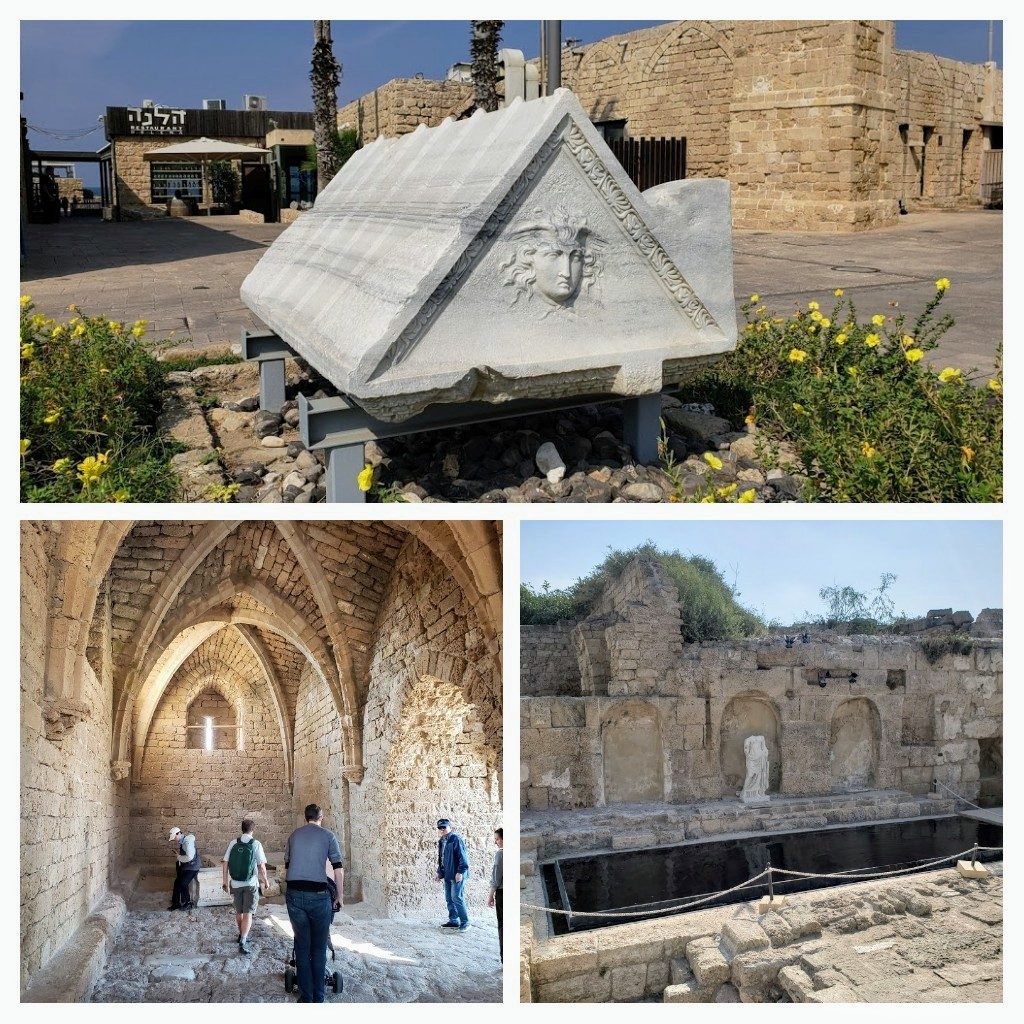
The main attraction for us was seeing the high-level aqueduct, which back in the day brought water from Shuni springs some 7.5km northeast of Caesarea and was the city’s water source. The remains of the aqueduct are right on the beach and really very cool. It’s a ‘high-level’ aqueduct because it reached Caesarea at a height of 8m above sea level. There was also a ‘low aqueduct’ carrying water from an artificial reservoir and arriving in the city at a height of 5.5m above sea level.
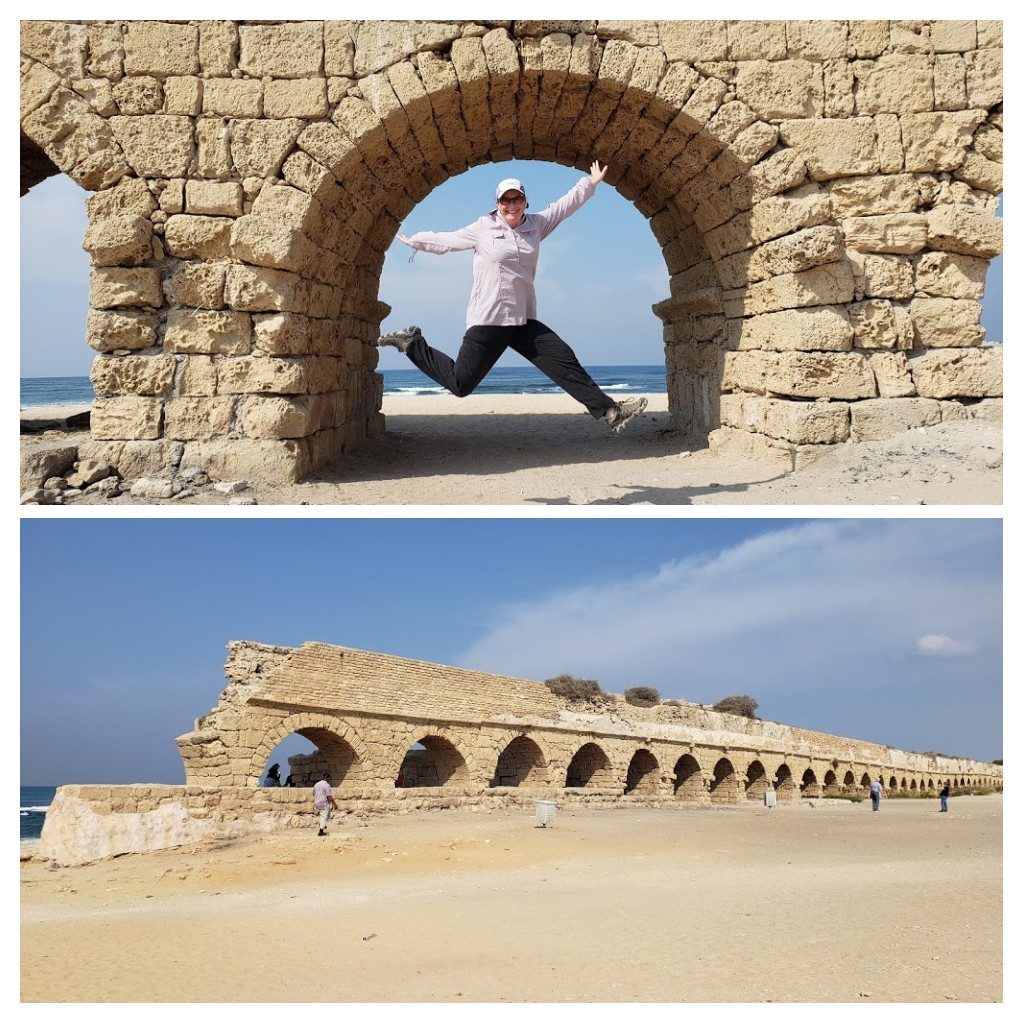
The population of Caesarea in Herod’s time was both Jews and gentiles but conflicts between them were one of the important causes of the Great Revolt that erupted in 66 CE. After the fall of Jerusalem it became the most important city in the land. In the 3rd and 4th centuries pagans, Samaritans, Christians and Jews all lived here and the city flourished. Towards the end of the 6th century a perimeter wall was built making it the largest fortified city in the country. Following the Arab conquest in 640, Caesarea lost its political and economic significance and most of its citizens left. Not until the 9th century when sea trade was further developed did it recover.
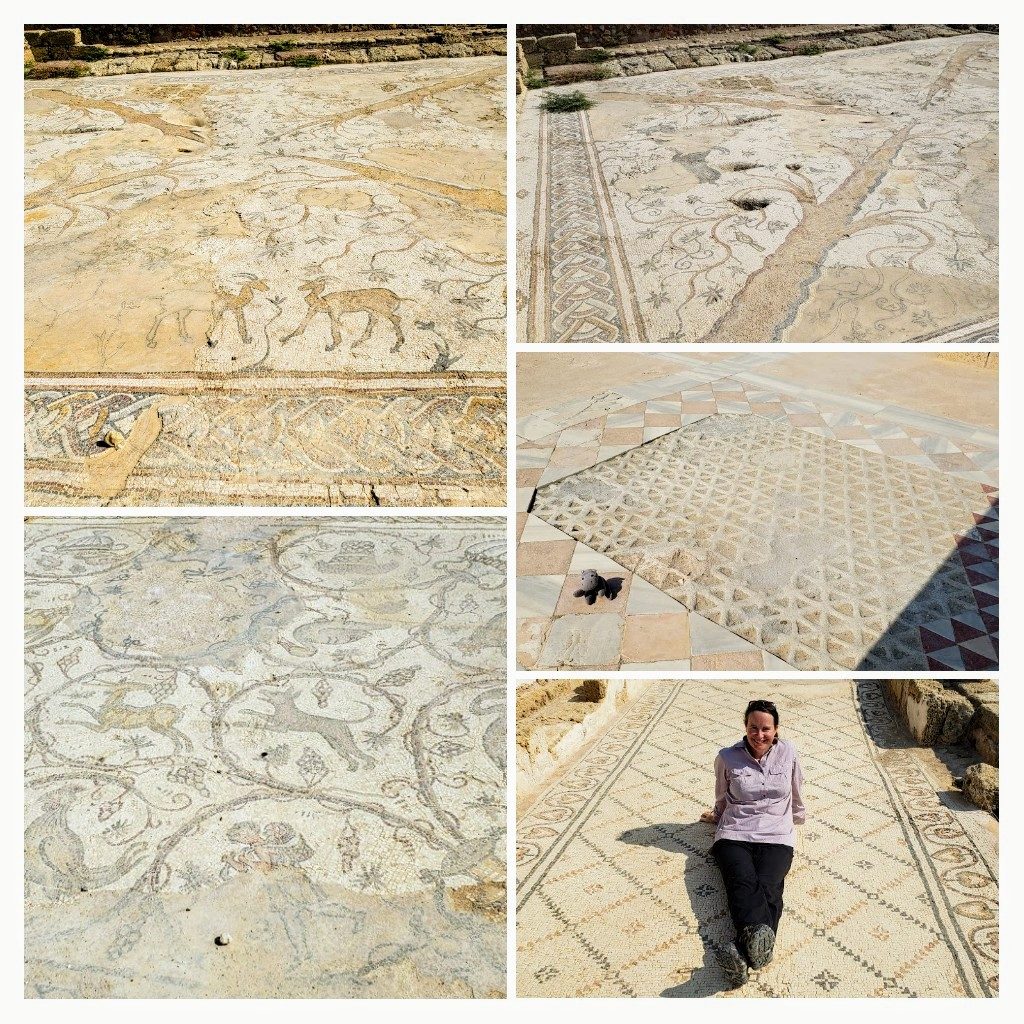
In 1101 the Crusaders conquered Caesarea and it was ruled by the Knights of Garnier. During the crusade of French King Louis IX in 1251 the city was fortified again with impressive intensity but it wasn’t enough to protect it from the Mamelukes attack in 1265. The city was destroyed and materials were carted off to be used for buildings elsewhere. It was desolate until the late 19th century when the Ottomans settled Bosnian refugees here. The destroyed Crusader fortress was renovated and became the admin centre. A kibbutz was founded in 1940 just south of the site and in recent years new residential areas were built. According to the taxi driver we had on the way back to the station, Caesarea is home to the rich and famous and also Israel’s only full length golf course, one we weren’t going to be playing on anytime soon with green fees of 540 shekels ($240 NZD)!
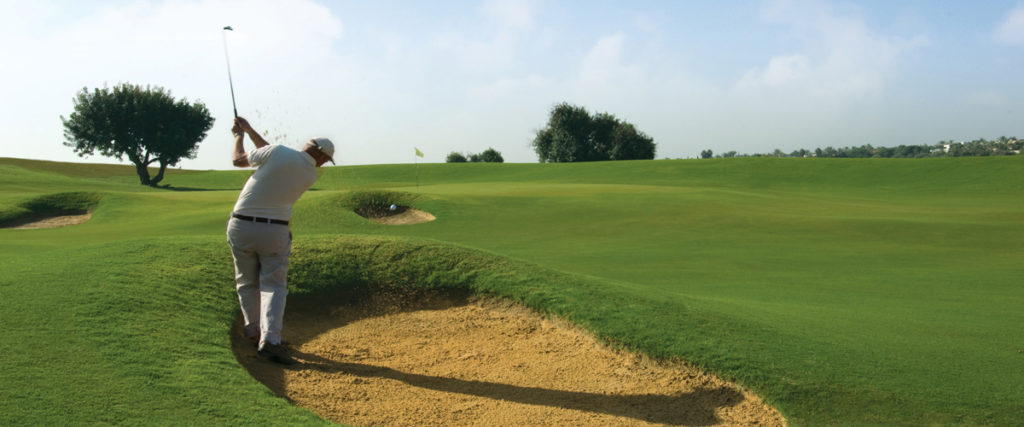
At various times during the last 150 years there have been excavations at the site and it is now a national park. Earlier this year a new Visitors Centre opened in four massive reconstructed vaults that once provided the base for a pagan temple built by King Herod in the first century BCE. Herod built the large platform to be a base for a lavish temple dedicated to Roma and Augustus. Later it was home to an octagonal Byzantine church, then a mosque, then later a crusader cathedral!
This area underneath showed some of the history of the area and a video about Herod and his incredible project of developing the city and the harbour. It helped us better imagine how the city would have been 2000 years ago. Also on display were some of the 2700 gold coins found on the seabed in the Caesarea harbour and anchors made of wood, stone and iron from the last 2000 years, also found in the harbour.
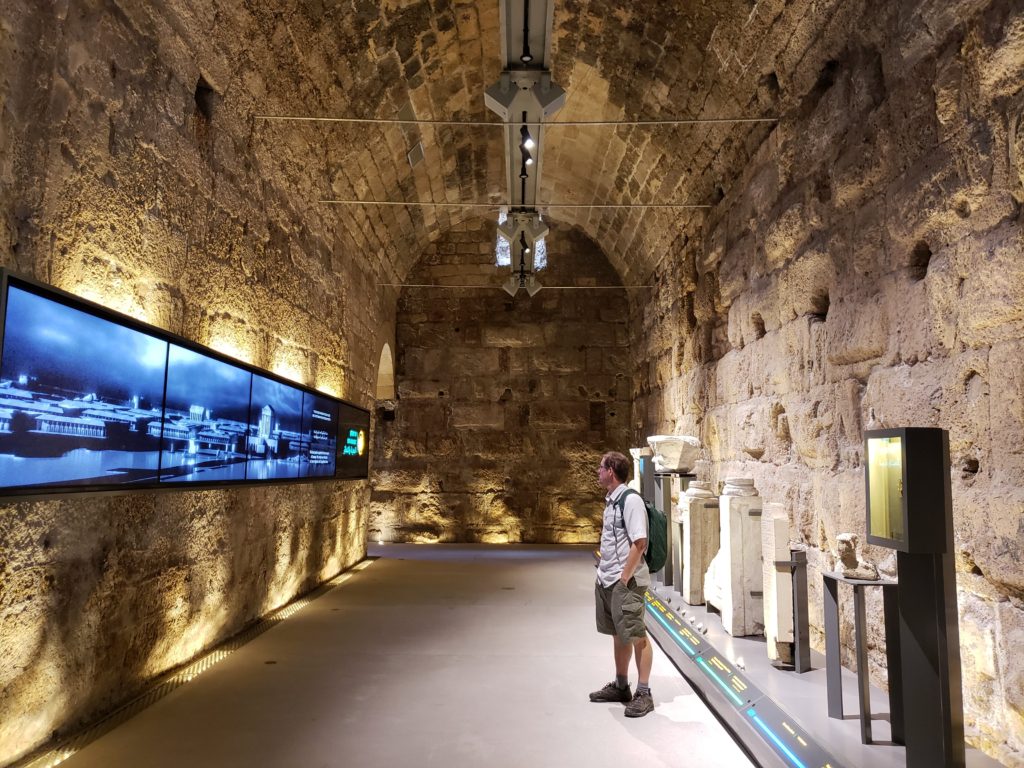
The fourth and final vault in the Visitor Centre was the only vault that had stayed intact since Herod had it built 2000 years ago. It was built to support the enormous temple platform. Quite amazing to think that these stones were in position when Acre was dedicated more than 2000 years ago. They have seen the hustle and bustle of the city, heard the voices of worship and ritual – pagan, Jewish, Christian, Samaritan and Muslim and also the sounds of battle, conquest and destruction.
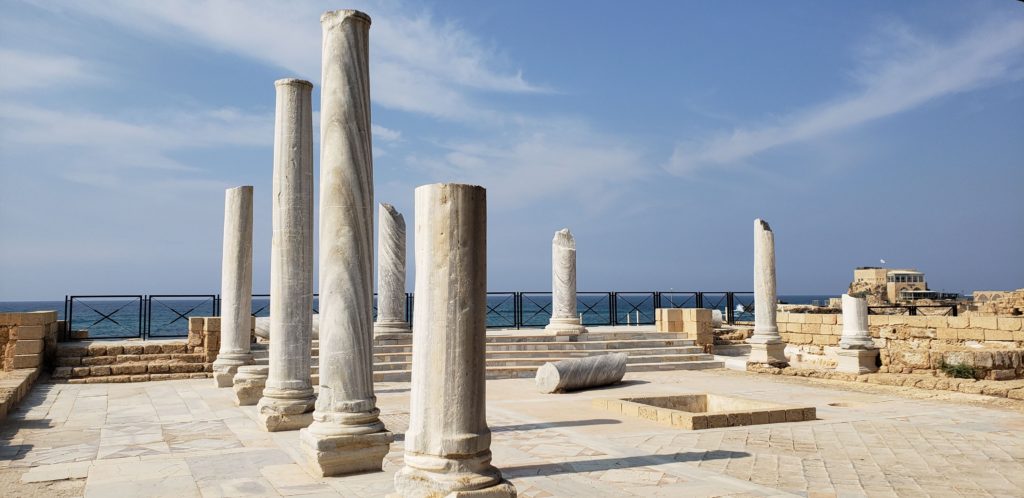
The bathhouse was quite interesting. Men would work out or wrestle each other in the palaestra (a gym Roman Empire style!) then they’d bathe in the public bathhouse. They could get a shave, a haircut, a massage or a cosmetic treatment in the rooms surrounding the bathhouse courtyards. Here was also a place to catch up on the latest news and discuss the city’s affairs, even do business.
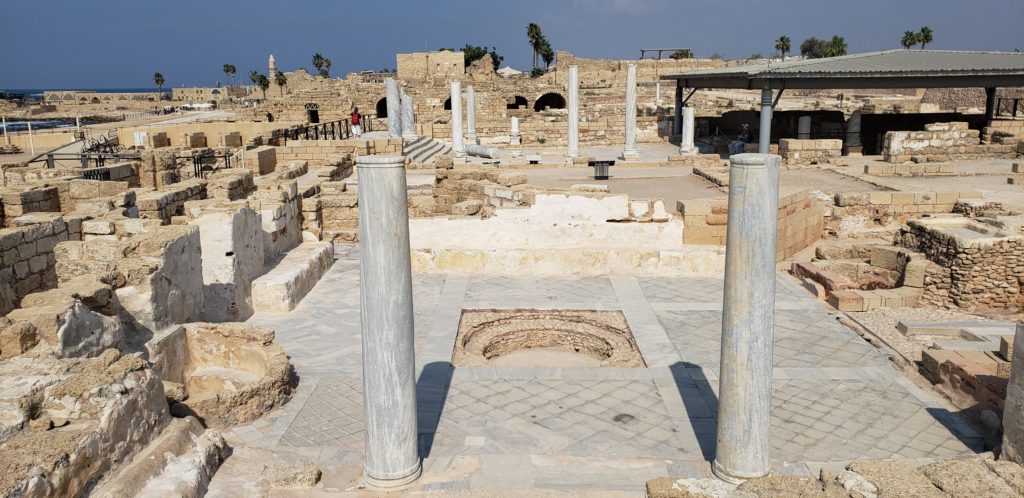
Another highlight was the hippodrome – especially for my good friend and travel companion, Hippo. 😉 We could really imagine the horse races they had here and the way people watched from the seating provided. There was they say room for 10,000 spectators!
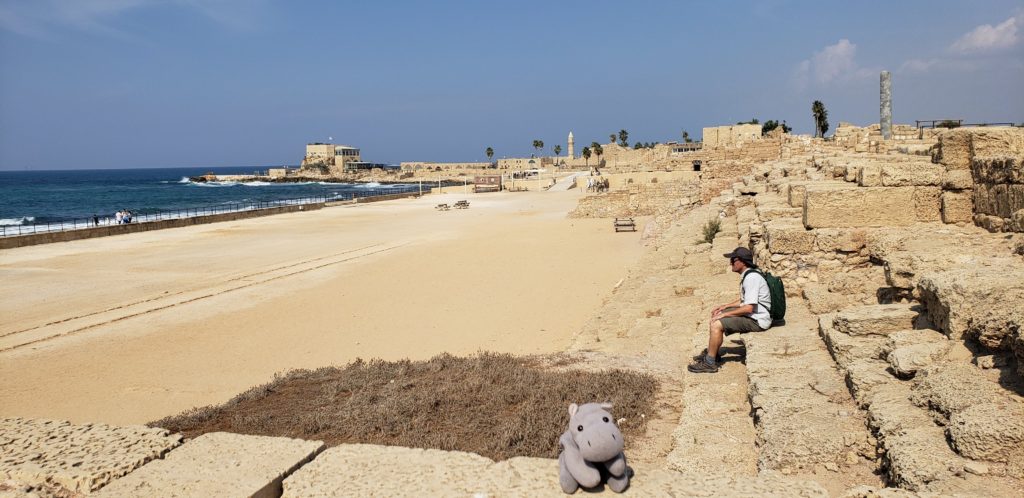
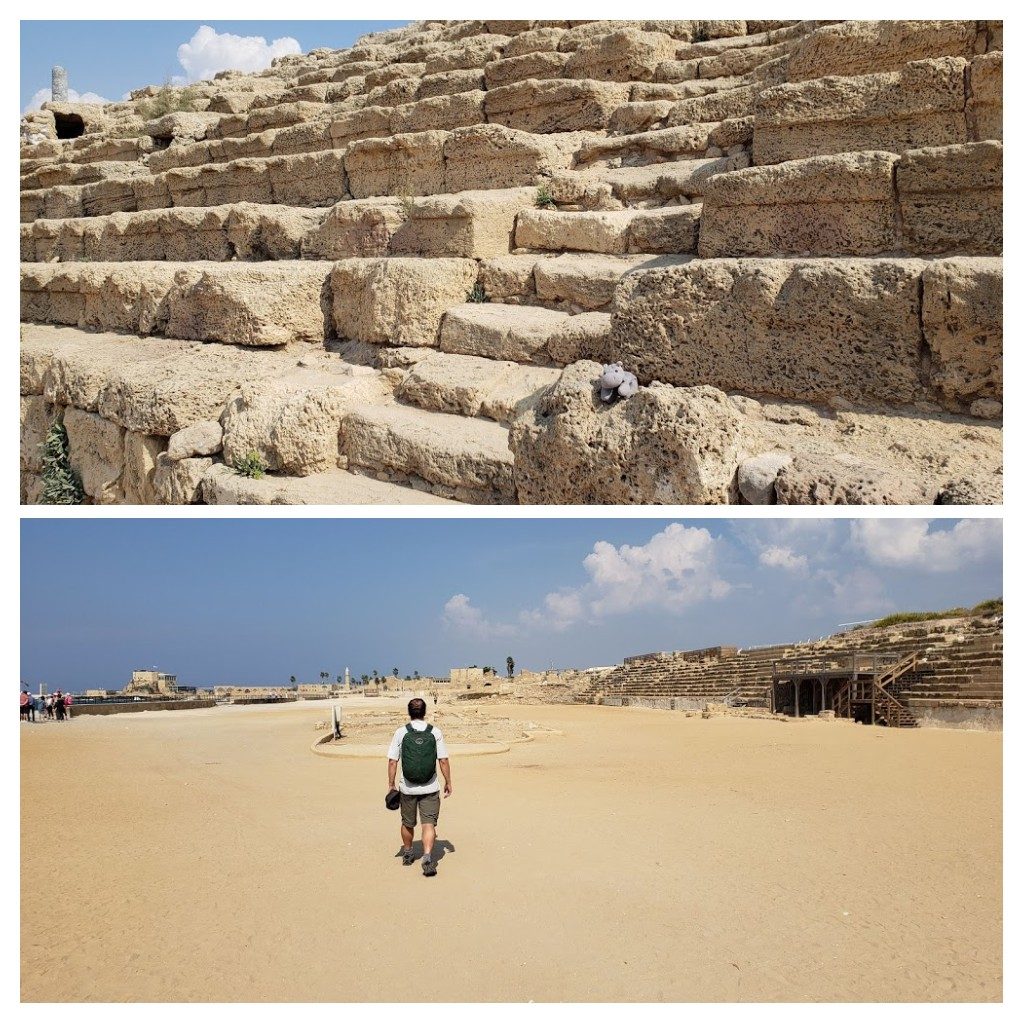
Herod’s harbour project was super ambitious and groundbreaking. It consisted of an outer quay with a 400m long breakwater, an inner quay, and an anchorage area with columns and mooring stones. The 1,800m long pier was served by an enormous system of warehouses. The harbour could accommodate hundreds of boats of varying sizes. The breakwater sank during Roman times but it was repaired in the time of the Byzantine emperor Anastasius (491-518 CE). It fell into disuse after the Arab conquest but was restored again in the 9th century. During the crusader period a new breakwater was built. The inner basin which had been clogged with silt became a residential quarter.

Aside from the harbour remains, there are other things of interest right by the coast and in the sea. On the edge of the coast are ruins of a Byzantine synagogue, with just the mosaic floor remaining. And now jutting into the sea are the remains of a palace with a pool, dating back to Roman times. It is thought that the pool once served as the city’s fish market.
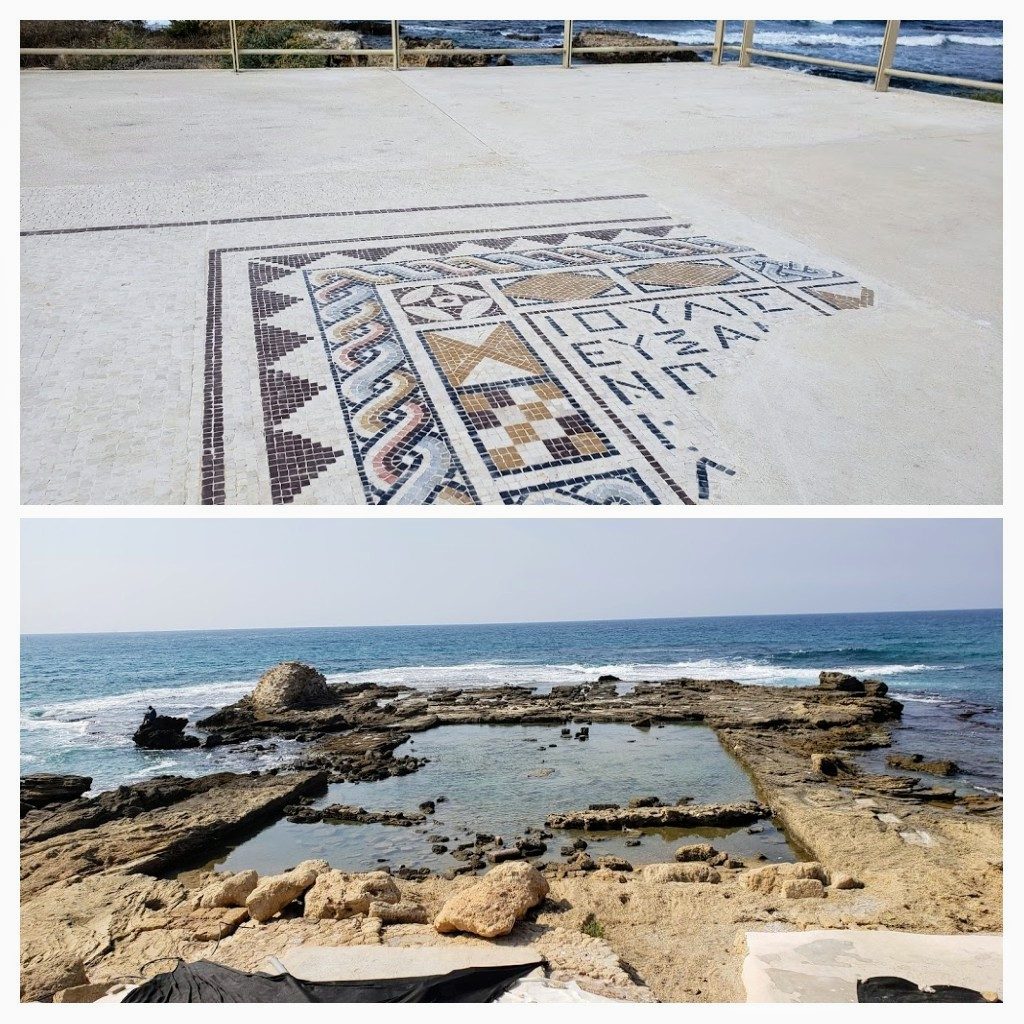
The final structure on our visit was one of the biggest – the Theatre. It is the most ancient of all theatres found in Israel, built in Herod’s time, it could accommodate 4000 visitors. It has been used for over 2000 years, although clearly it has undergone some refurbishment in modern times. Stage crew were assembling something for a concert there when we visited.

So that was Caesarea! Definitely worth a visit. It’s an easy day trip from Haifa or Acre but you’re best to have a car as the public transport to get to the ancient site is very infrequent. Next post is on Haifa – stay tuned.